Related Research Articles

The history of Latvia began around 9000 BC with the end of the last glacial period in northern Europe. Ancient Baltic peoples arrived in the area during the second millennium BC, and four distinct tribal realms in Latvia's territory were identifiable towards the end of the first millennium AD. Latvia's principal river Daugava, was at the head of an important trade route from the Baltic region through Russia into southern Europe and the Middle East that was used by the Vikings and later Nordic and German traders.

Daugavpils is a state city in southeastern Latvia, located on the banks of the Daugava River, from which the city derives its name. The parts of the city to the north of the river belong to the historical Latvian region of Latgale, and those to the south lie in Selonia. It is the second-largest city in the country after the capital Riga, which is located some 230 kilometres northwest and is the ninth most populous city in the Baltic states.

Jānis Kristaps Čakste was a Latvian politician and lawyer who served as the first head of an independent Latvian state as the Chairman of the People's Council (1918–1920), the Speaker of the Constitutional Assembly (1920–1922), and as the first President of Latvia (1922–1927).
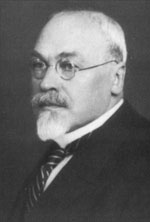
Gustavs Zemgals was a Latvian politician and the second President of Latvia. He also was twice the mayor of Riga.
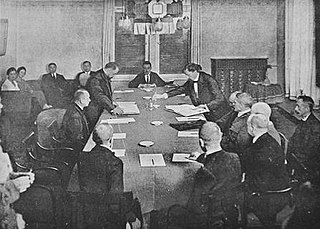
The Latvian–Soviet Peace Treaty, also known as the Treaty of Riga, was signed on 11 August 1920 by representatives of the Republic of Latvia and Soviet Russia. It officially ended the Latvian War of Independence.
In Latvia, Russians have been the largest ethnic minority in the country for the last two centuries. The number of Russians in Latvia more than quadrupled during the Soviet occupation of Latvia when the size of the community grew from 8.8% of the total population in 1935 (206,499) to 34.0% in 1989 (905,515). It started to decrease in size again after Latvia regained independence in 1991 falling to 23.4% at the beginning of 2024.

Mikhail Osipovich Eisenstein was a civil engineer and architect working in Riga, the present-day capital of Latvia, when the city was part of the Russian Empire. He was active as an architect in the city at a time of great economic expansion and consequent enlargement, which coincided with the flourishing of Art Nouveau architecture. During the years 1901–1906, Eisenstein designed many of the best-known Art Nouveau buildings of Riga. His son, Sergei Eisenstein, became a well-known Soviet film director.
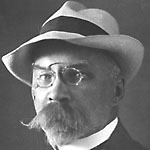
Rihards Zariņš was a prominent Latvian graphic artist.
Jānis Tilbergs, also known as Tillbergs or Tilberg ; was a Latvian artist, painter, sculptor, and medallist. He is most renowned as a highly accomplished portraitist.
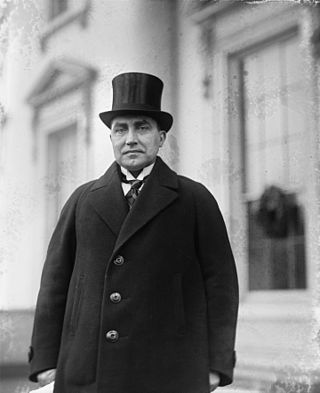
Ants Piip VR III/1 was an Estonian lawyer, diplomat and politician. Piip was the 1st Head of State of Estonia and the 5th Prime Minister of Estonia. Piip played a key role in internationalising the independence aspirations of Estonia during the Paris Peace Conference following World War I.
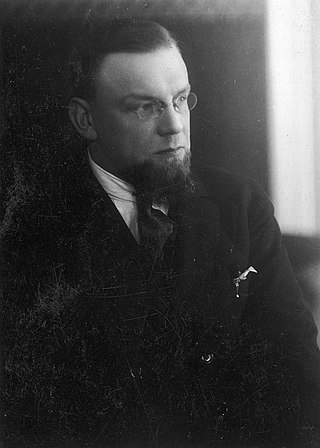
Marģers Skujenieks held the office of Prime Minister of Latvia twice from 19 December 1926 – 23 January 1928 and 6 December 1931 – 23 March 1933.

Edvarts Virza was a Latvian writer, poet and translator. In 1935 and 1936 he was a nominee for the Nobel Prize in Literature. His works were banned in the Latvian SSR until 1985.

Elena Dmitriyevna Stasova was a Russian Soviet revolutionary, Old Bolshevik and an early leader of the organisation that would go on to become the Communist Party of the Soviet Union.

The Faculty of Law at Saint Petersburg State University is the oldest law school and one of the biggest research centers in Russia.

Yuri Petrovich Gaven, born Jānis Daumanis, was a Latvian revolutionary and Soviet politician and Chekist. He was a key figure in the defeat of the Crimean People's Republic and the establishment of the short-lived Taurida Soviet Socialist Republic and an active participant in the Red Terror in Crimea. Executed during the Stalinist purges in 1936, he was rehabilitated in 1958.

Jan Antonovich Berzin was a Latvian village teacher, later Bolshevik revolutionary, journalist and Soviet diplomat. He was Ambassador of the Soviet Union to Austria between 1925 and 1927. He was executed during the Great Purge and posthumously rehabilitated in 1956.
Burkards Dzenis was a Latvian artist.

Semyon Mikhailovich Nakhimson was a member of the revolutionary movement in Russia and military commissar of the Yaroslavl District.

Anna Rūmane-Ķeniņa (1877–1950) was a Latvian teacher, writer, women's organization organizer and public figure who campaigned for Latvian independence.
Gothards Vilhelms Nikolajs Munters was a Latvian diplomat who served as Minister of Foreign Affairs of the Republic of Latvia from 1936 to 1940. He was also a member of the Council of the League of Nations from 1936 to 1938, Chairman of the Far East Commission and the President of the 101st Session of the League in 1938.
References
- 1 2 3 "Rihards Zariņš (1869–1939). What Latvia's Forests are Whispering". Latvian National Museum of Art . Retrieved 14 January 2024.
- 1 2 "Humors un satīra žurnālos, kalendāros, antoloģijās" (in Latvian). Latvijas Sabiedriskie Mediji. 22 October 2019. Retrieved 14 January 2024.
- ↑ Kristiāna Ābele (2021). "Joining Forces for the Art of the Homeland: The Jahrbuch für bildende Kunst in den Ostseeprovinzen (1907–1913) from the Perspectives of Artistic Collaboration, Visual Documentation, Design and Typography". Acta Academiae Artium Vilnensis (101–102). S2CID 245391846.
- ↑ Stella Pelše (2017). "Latvian National Art after 1934: Ideology, Practice and Evaluation". Kunstiteaduslikke Uurimusi. 26 (1–2): 54. ProQuest 1927525190.
- ↑ "Svari (satīriskais mākslas žurnāls)" (in Latvian). LNB Digitala Biblioteka. Retrieved 14 January 2024.
- ↑ Catherine Gibson (2023). "Attuning to Emotions in the History of Border-Making: The Estonian-Latvian Boundary Commission in 1920". Journal of Modern European History. 22: 13. doi: 10.1177/16118944231221031 .
- 1 2 Raimonds Cerūzis (2017). "Eastward Direction of Latvia's Foreign Policy during the Interwar Period". In Diāna Potjomkina; Andris Sprūds; Valters Ščerbinskis (eds.). The Centenary of Latvia's Foreign Affairs. Activities and Personalities. Riga: Latvian Institute of International Affairs. p. 44. ISBN 978-9934-567-00-1.